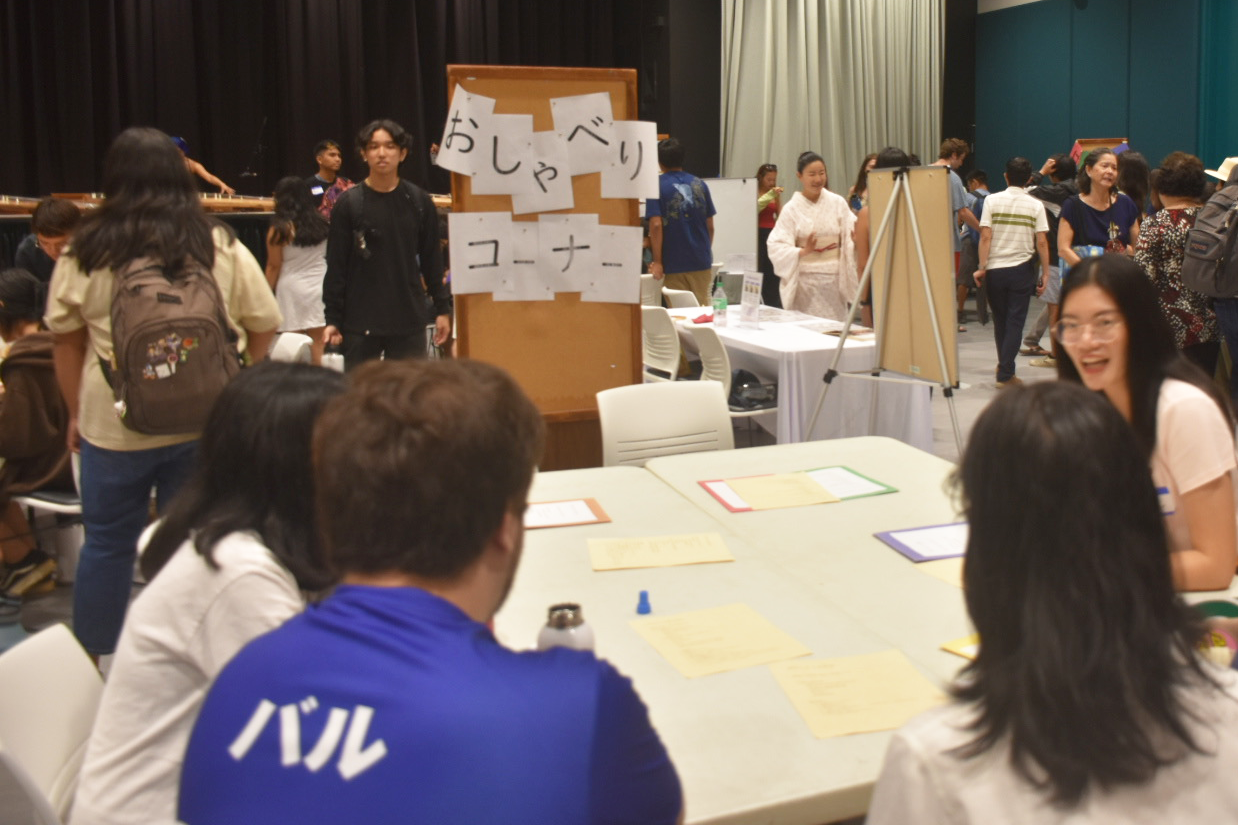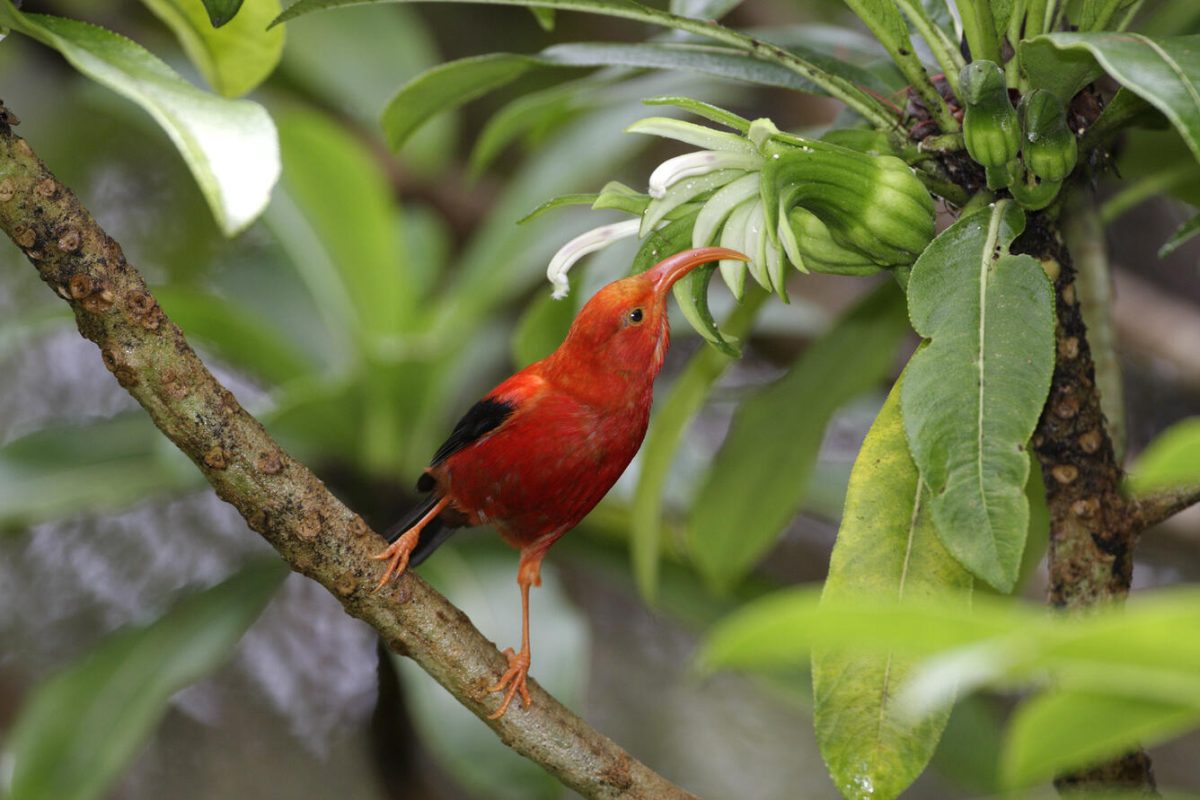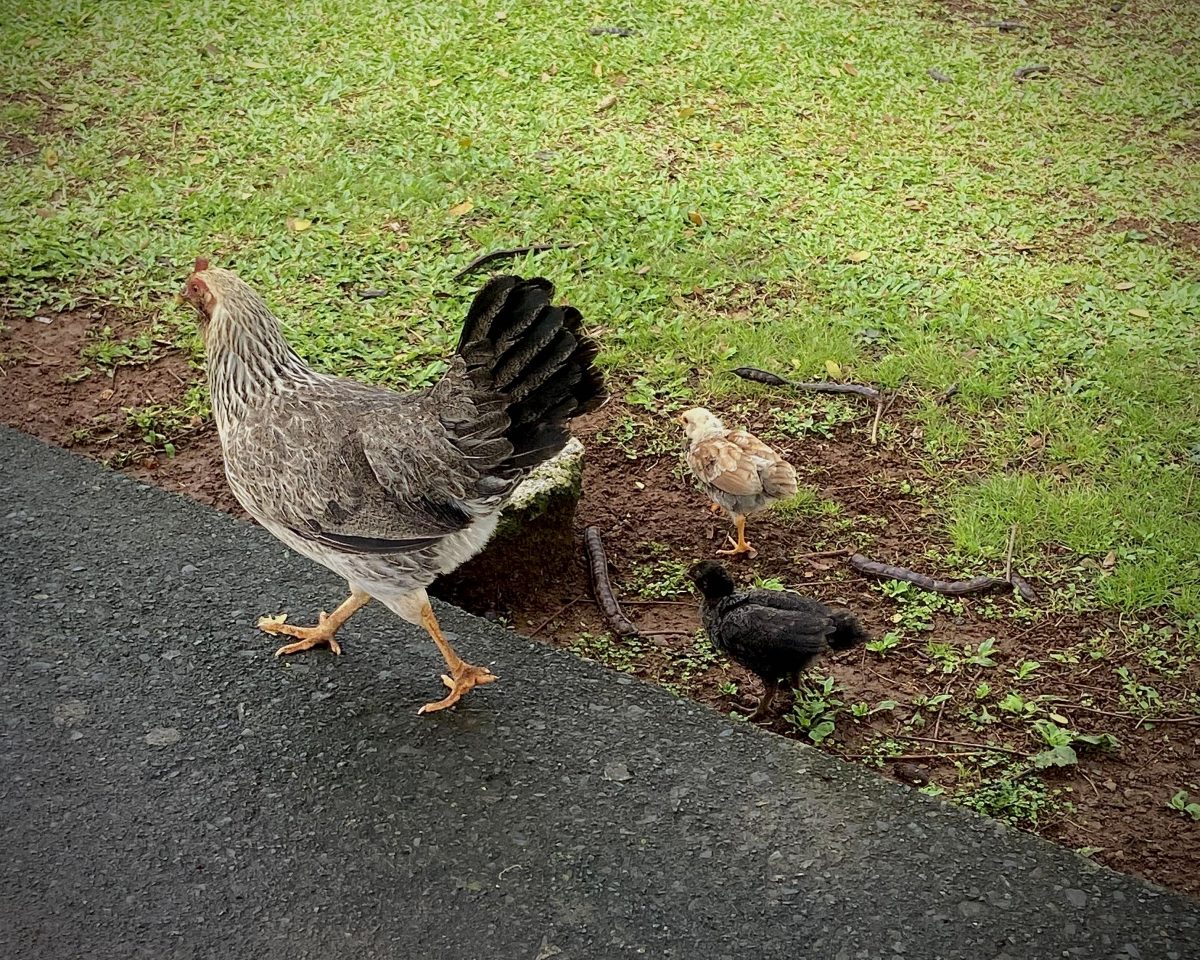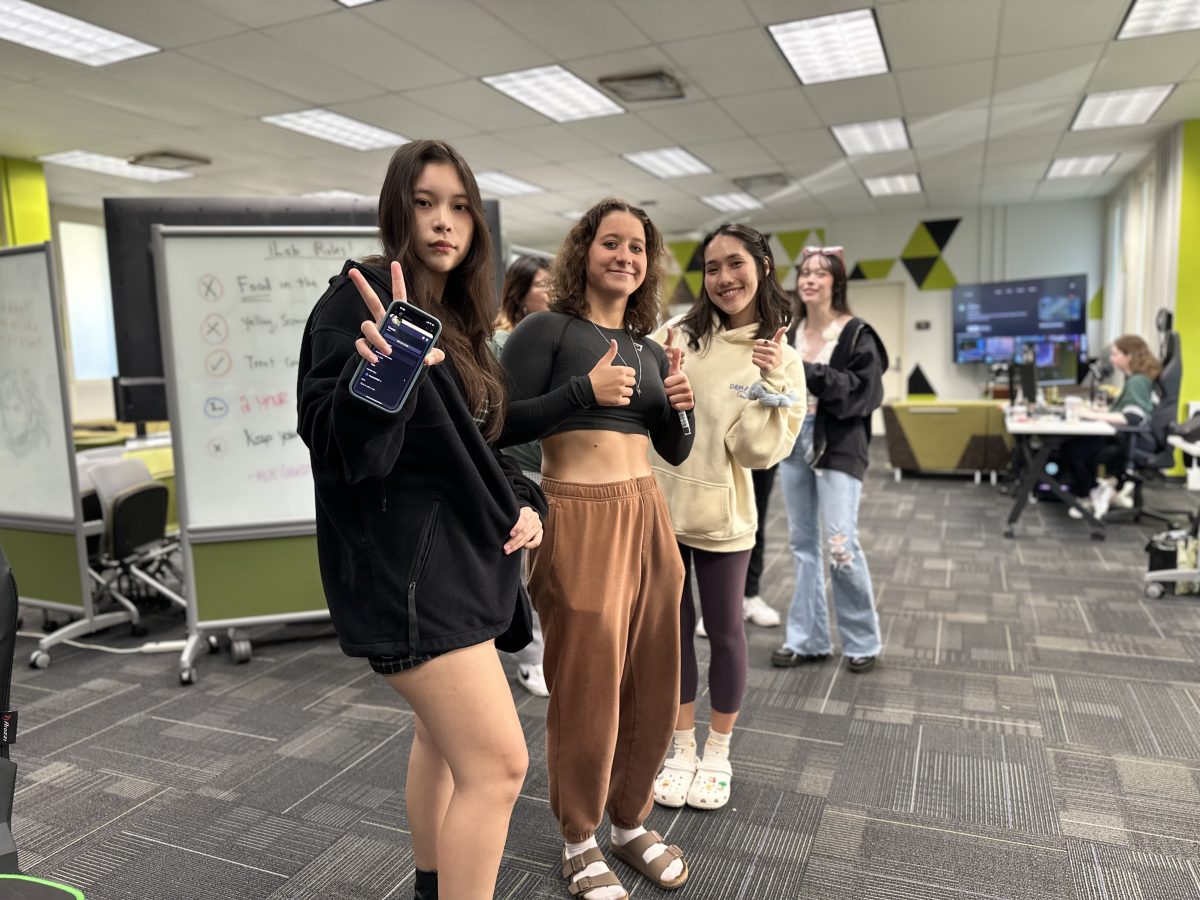Nippon Culture Day continues to grow in popularity at the University of Hawai’i, attracting more than 850 people to the Campus Center Ballroom Friday. The previous high turnout for the cultural event was 700, last year.
The event — organized by the Japanese program within the East Asian Languages & Literatures department, which is the largest academic program of its kind in the United States — gave high school students, college students and community members opportunities to experience traditional and contemporary Japanese culture first-hand via various games and other types of interactive learning opportunities. Those activities included tables for playing card games, such as Karuta and Hanafuda, or making origami. Fluent speakers of Japanese and musicians specializing in traditional Japanese instruments also gave impromptu lessons. Others led Ikebana or Tea Ceremony workshops.
Sara Vedra, a first-year Japanese major at UH, for example, took an Ikebana lesson. Ikebana is the centuries-old Japanese art of arranging flowers, using carefully selected blossoms, greenery and other flora to convey specific feelings.
“It was lots of fun,” Vedra said. “The teachers made sure to give encouragements and advice. This experience allowed me to see what childhood games and traditional cultures are kinda like.”
Organizers of the event included Yumiko Tateyama, Pier-Carlo Tommasi and Masaru Mito; other participating organizations included the Japan Exchange and Teaching (JET) Program, the UH Study Abroad Center and the Hawai’i Language Roadmap Initiative.
Samantha Tan, a Ph.D. student in the EALL department, said that cultural events, like Nippon Culture Day, help people to learn and better understand the language as well.
“A lot of people just think, ‘Oh, Japan, anime and manga.’ But, there’s way more than that, there’s music, traditional games like Karuta and Hanafuda, and cultural things, like how to bow,” she said. “It’s important to know about the language. You can’t separate language and culture. … there (are) multiple layers of it, and this is still just barely scratching the surface.”






